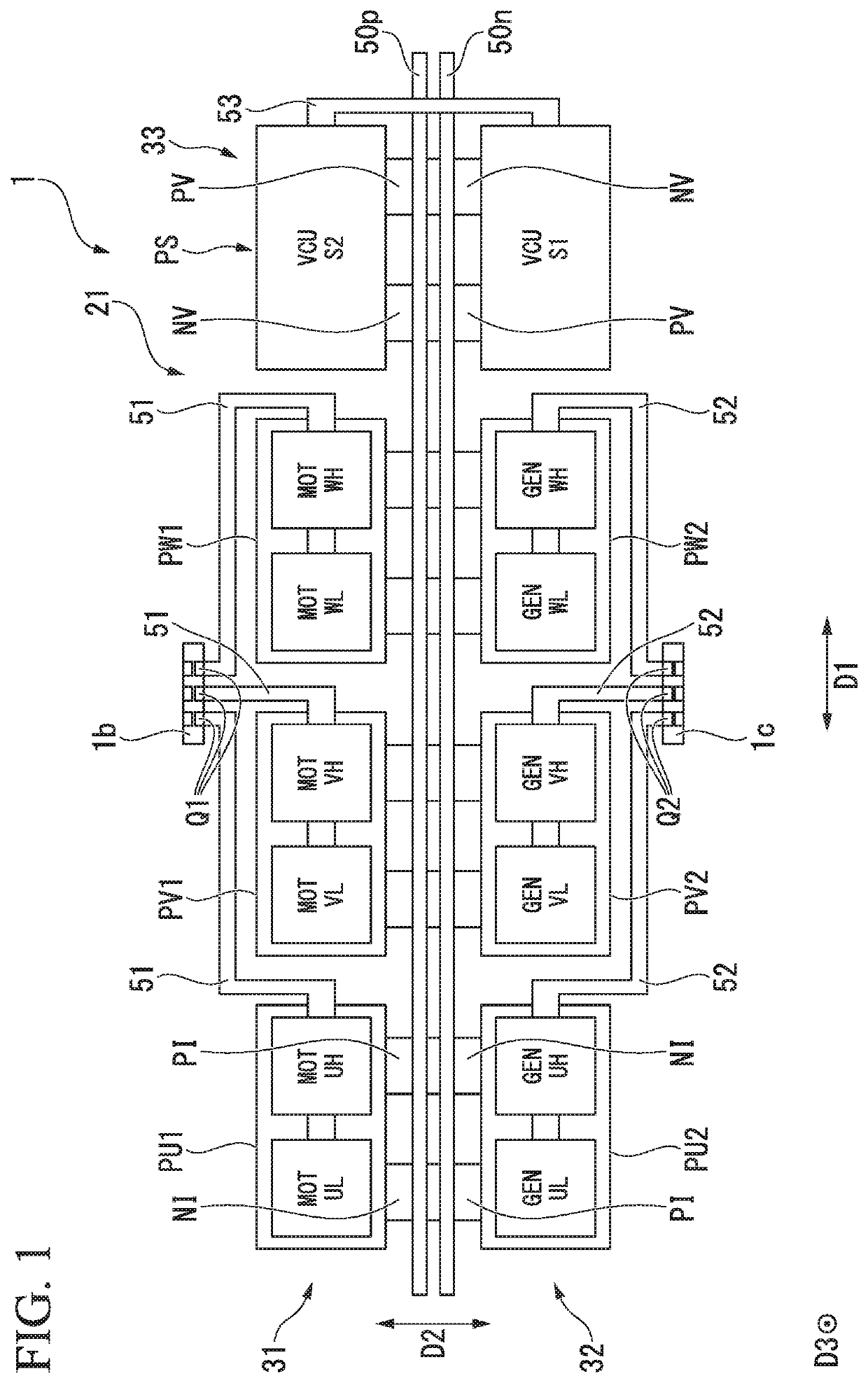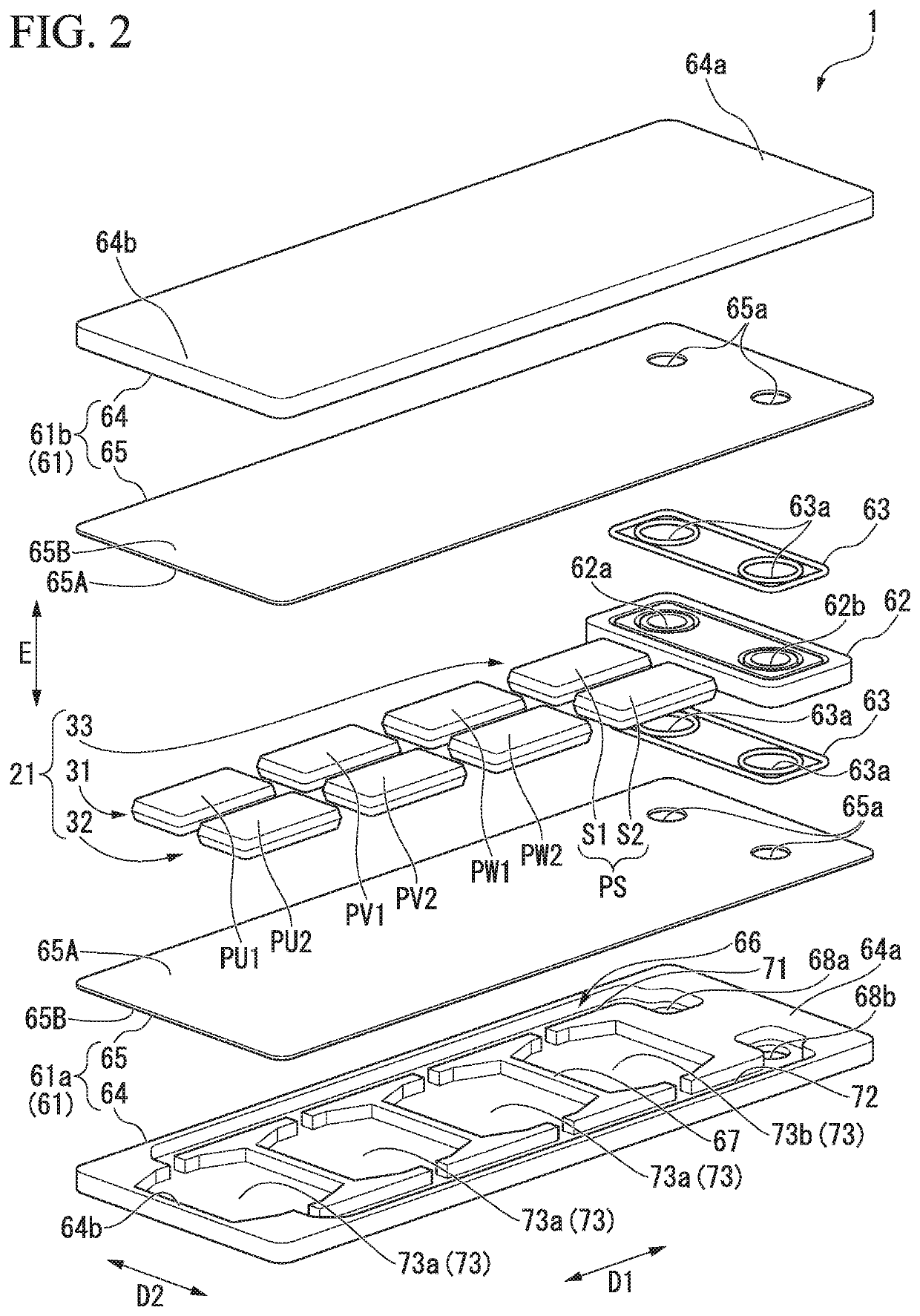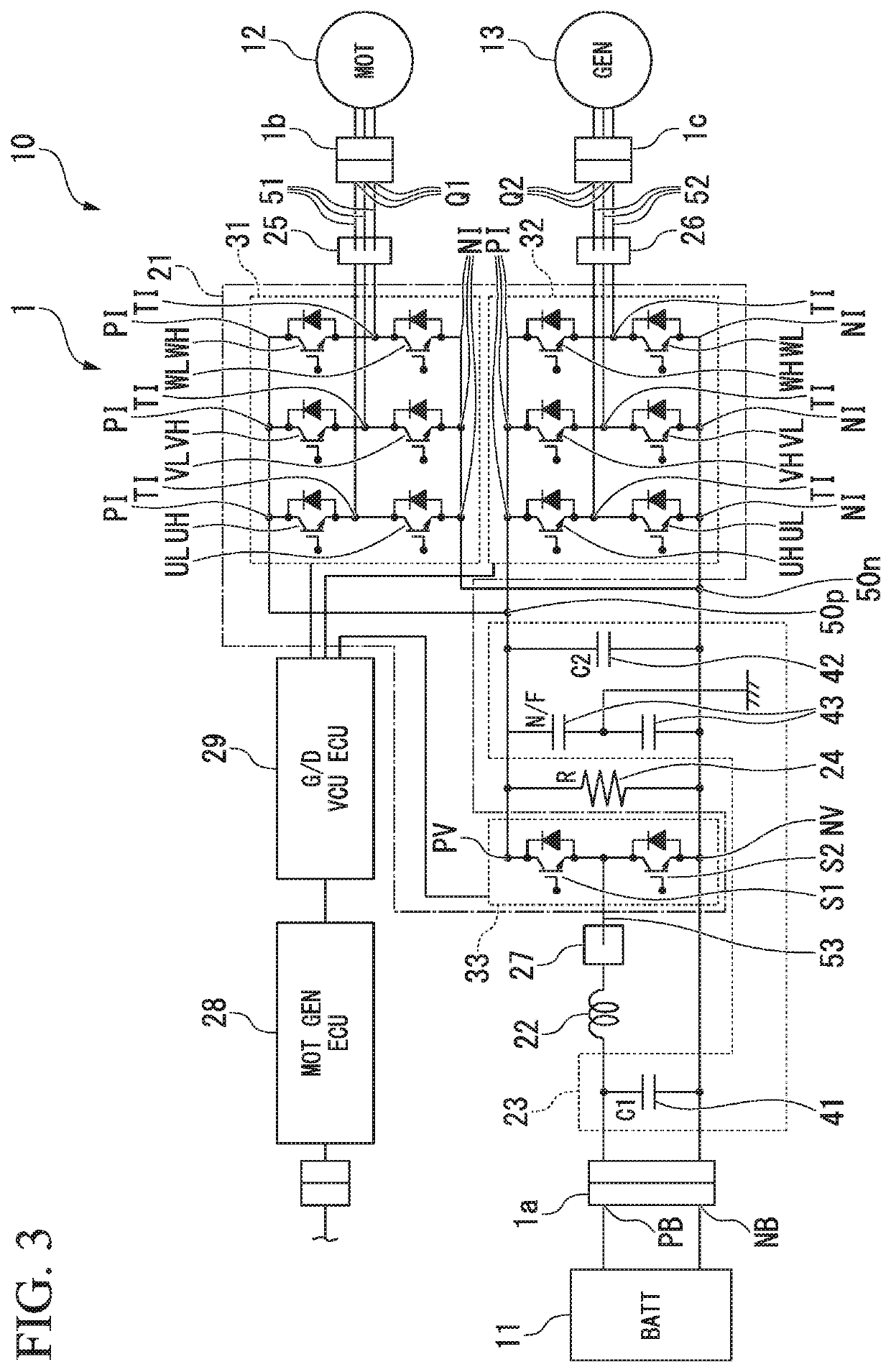Power conversion device
a power conversion device and power conversion technology, applied in the direction of solid-state devices, basic electric elements, electric apparatus construction details, etc., can solve the problems of becoming difficult to uniformly cool each affecting the cooling performance of the circuit element portions, so as to suppress the increase in the cooling performance, uniform and efficient cooling, and efficient cooling of the low side arm elements
- Summary
- Abstract
- Description
- Claims
- Application Information
AI Technical Summary
Benefits of technology
Problems solved by technology
Method used
Image
Examples
Embodiment Construction
[0023]Hereinafter, an embodiment of a power conversion device of the present invention will be described with reference to the accompanying drawings.
[0024]The power conversion device according to the present embodiment controls power deliver between a motor and a battery. For example, the power conversion device is mounted in an electromotive vehicle or the like. The electromotive vehicle is an electric automobile, a hybrid vehicle, a fuel cell vehicle, or the like. The electric automobile is driven using a battery as a motive power source. The hybrid vehicle is driven using a battery and an internal-combustion engine as a motive power source. The fuel cell vehicle is driven using a fuel cell as a driving source.
[0025]FIG. 1 is a plan view schematically illustrating a configuration of a power conversion device 1 according to an embodiment of the present invention.
[0026]FIG. 2 is an exploded perspective view schematically illustrating a configuration of a power conversion device 1 ac...
PUM
 Login to View More
Login to View More Abstract
Description
Claims
Application Information
 Login to View More
Login to View More - R&D
- Intellectual Property
- Life Sciences
- Materials
- Tech Scout
- Unparalleled Data Quality
- Higher Quality Content
- 60% Fewer Hallucinations
Browse by: Latest US Patents, China's latest patents, Technical Efficacy Thesaurus, Application Domain, Technology Topic, Popular Technical Reports.
© 2025 PatSnap. All rights reserved.Legal|Privacy policy|Modern Slavery Act Transparency Statement|Sitemap|About US| Contact US: help@patsnap.com



